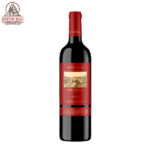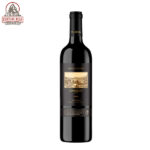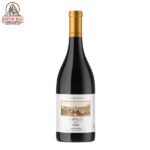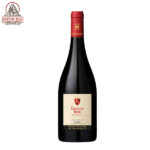Salento IGT
Salento IGT is one of the most commonly used IGT titles in Puglia, southern Italy. It covers the Salento, the limestone-based peninsula that divides the Adriatic Sea from the Ionian Sea and provides Italy with its ‘heel’. In theory, Salento IGT wines may be red, white, rosé, still, sparkling (spumante), sweet (passito) or dry – essentially any style the local winemakers can dream of. In practice, however, the majority stick firmly to the long-established styles of the region: powerful, dry, rustic reds.
The Salento consists, in administrative terms at least, of Puglia’s three southernmost provinces, Taranto (also covered by the Tarantino IGT title), Brindisi and Lecce. Thus the viticultural area covered by the Salento IGT title stretches 100 miles (180km) north to south, from the white beaches of Leuca, past the port town of Taranto, past the Gravina di Laterzacanyon and right up to the border with Basilicata.
The list of grape varieties sanctioned for use in Salento IGT wines is substantial, numbering about 50. This is a symptom of southern Italy’s move towards varietal winemaking and labeling, itself a way of attracting the attention of the target consumer base. As is common for IGT titles, the list is a mix of Italian classics and the globally popular varieties such as Cabernet Sauvignon, Merlot and Chardonnay that have made their way from France over the years.
Although such popular, ubiquitous grapes as Sangiovese, Montepulciano and Pinot Grigio may be used in Salento IGT wines, it is the traditional Puglian varieties that hold sway, particularly those used in the local DOC-level wines.
Southern Puglia’s star-performing DOCs are Primitivo di Manduria and Salice Salentino, so it is no surprise that their core grape varieties (Primitivo, Negroamaro and Malvasia Nera) are also key in Salento IGT wines. The aromatic red Aleatico and the little-known Susumaiello even get a look-in here, as does Fiano, making a token appearance for the white wines.
The terroir here is classic Puglia – hot, flat and dry. Only closer to the coast is there any respite from the famous sun of southern Italy, which is accurately nicknamed Il Mezzogiorno (meaning ‘the midday’ and referring to the relentless heat).
The landscape is dominated by olive groves on a scale quite unlike any other part of Italy, and Puglia generates almost half of Italy’s olive oil. Although vineyards are also prolific here (and were even more so until the European Union’s vine-pull schemes of the late 20th Century), their numbers are still swamped by the sheer volume of olive-tree sites.
Puglia’s other IGTs of significance include Daunia, Murgia, Tarantino and the region-wide Puglia IGT.
Showing all 2 results







